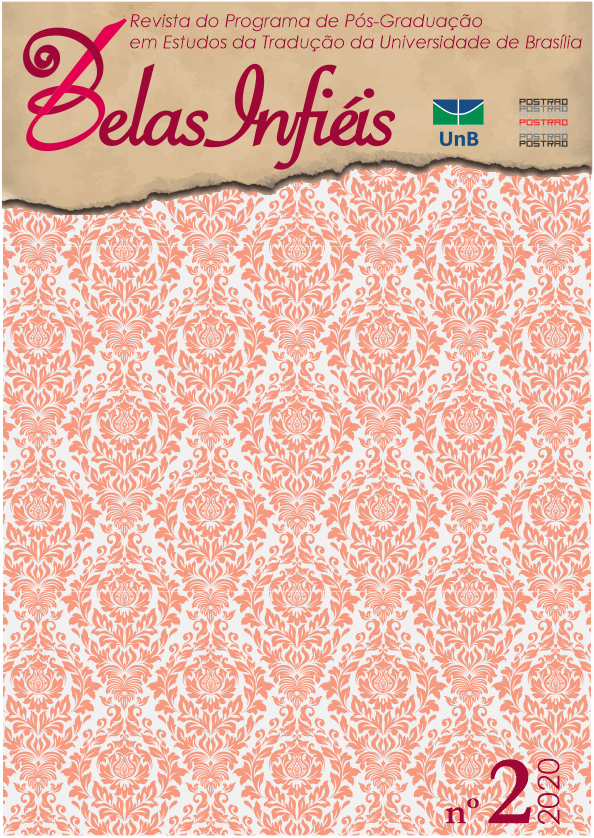Five poems from Noite nu Norte, by Fabián Severo
DOI:
https://doi.org/10.26512/belasinfieis.v9.n2.2020.29119Keywords:
Fabián Severo. Portuñol. Border. Translation. Nomadism.Abstract
Noite nu Norte (2010) is the first book written by Fabián Severo (1981), a Uruguayan author who, since his first publication, writes in Portuñol. This mutable language comes from the mixture of inventiveness and heritage, which de(re)territorializes the border of Artigas and Quaraí, between North and South. At the same time, the work is coetaneous of several literary manifestations of the Portuñol. In regard of the translation, some of them have been translated into another language by recreating their hybridism; its weave can be sewed by combining elements from Portuguese, Guarani, Spanish, English, Italian etc. In Severo's writing, the destructive-inventive relation of the language tensions the Portuguese and the Spanish and moves in an inter-place that can work differently depending on who is reading it. Therefore, we propose translations of five poems from Noite nu Norte based on the premise of destabilizing translation boundaries between Portuñol and Portuguese.
Downloads
References
BEHARES, Luis E. Transliteraciones fronterizas (Posfácio). In: SEVERO, Fabián. Noite nu Norte/Noche em el Norte: Poesía de la frontera. Montevidéu: Rumbo Editorial, 2011.
DELEUZE, Gilles. GUATTARI, Félix. Mil platôs: capitalismo e esquizofrenia, v. 1. Tradução de Aurélio Guerra Neto e Celia Pinto Costa. São Paulo: Ed. 34, 1995. p. 16. Tradução de: Mille plateaux.
FRENKEL-BARRETTO, E. Linguagens híbridas para inoperar fronteiras [Uma leitura de Noite Nu Norte e Mar paraguayo]. In: XV Encontro Abralic, 2016, Rio de Janeiro. Anais eletrônicos do XV encontro ABRALIC. Rio de Janeiro: Dialogarts, 2016. p. 2298-2305.
PERLONGHER, Néstor. Sopa paraguaya. In: BUENO, Wilson. Mar paraguayo. São Paulo: Iluminuras, 1992. p. 9.
SEVERO, Fabián. Noite un Norte. Versión anoitesida. Montevidéu: Kapparazón, 2017.
Downloads
Published
How to Cite
Issue
Section
License
Given the public access to this journal, the texts are free to use but requires the recognition of the original authorship and initial publication in this journal to be properly stated.
 The journal allows the use of works published for non-commercial purposes, including the right to submit the work to publicly accessible databases. Published contributions are the sole and exclusive responsibility of the author(s).Â



















